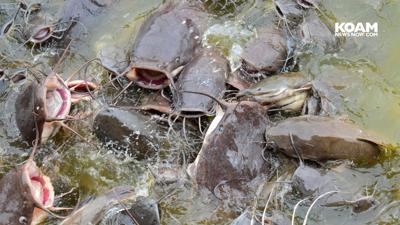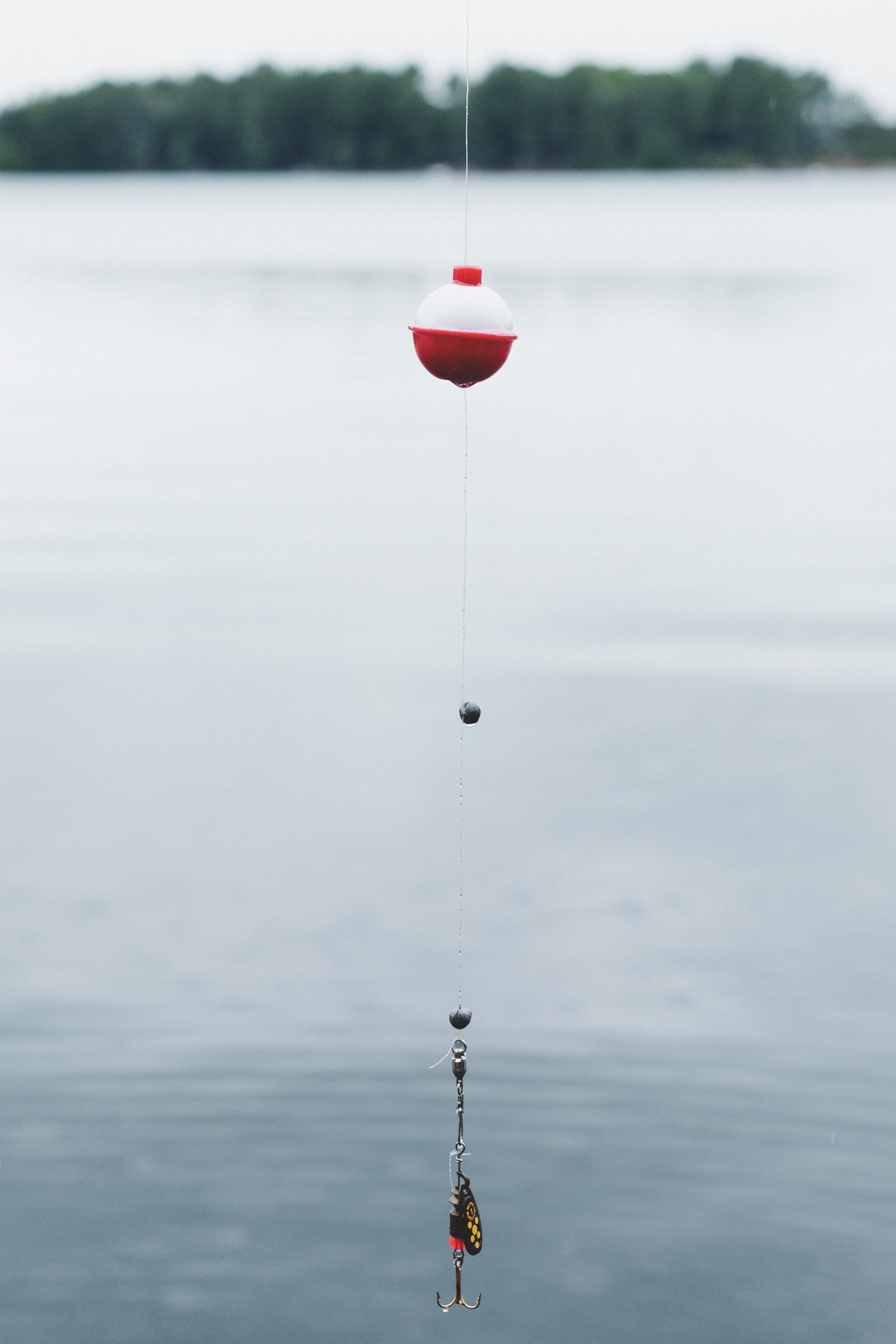

Common Species of Catfish in North America
Catfish Rigs aim to provide you with accurate information to maximize your success in targeting specific fish species. Here is an overview of common catfish species in North America.
-

Flathead Catfish
Common in most large impoundments and streams.
The flathead catfish does not have a forked tail, unlike the blue catfish or a channel catfish that have a forked tail.
Facts: Flathead catfish are a favorite of many anglers. Flatheads can exceed 100 pounds.
Habitat
Adult flatheads are found near cover in larger pools and deep holes. They like old brushy tangles, submerged logs, and undercut banks.
Food sources: Flatheads feed mainly on live fish and crayfish. Other common foods include mussels, snails, and insects.
Life Cycle
Spawning usually takes place in late May or early June when the water temperature reaches 75 degrees F. Hollow logs, overhanging underwater ledges, or holes under mud banks are typical nesting places. Females lay about 10,000 eggs each. Males guard the eggs against intruders, including the female. Eggs hatch in six to 10 days as determined by temperature. After hatching, the fry is attended for a short time by the male as they feed in a dense school.
-

Blue Catfish
Blue catfish have a forked tail as does the channel catfish. The anal fin will be straight across the bottom of a blue catfish.
Facts: Blue catfish are a favorite of many anglers. Catfish feed more by taste and touch than by sight. Blues can exceed 100 pounds.
Habitat
Found in large rivers and major reservoirs, blue catfish generally prefer areas with sand, gravel or rock bottoms.
Food sources: Blue catfish feed primarily on fish, mussels, snails, insects and crayfish.
Life Cycle
Spawning usually takes place in late May or early June when the water temperature reaches 75 degrees F. Hollow logs, overhanging underwater ledges or holes under mud banks are typical nesting places. Females lay about 10,000 eggs each. Males guard the eggs against intruders, including the female. The eggs hatch in six to 10 days as determined by temperature. After hatching, fry are attended for a short time by the male as they feed in a dense school.
-

Channel Catfish
Channel catfish have a forked tail as does the blue catfish. The anal fin will be curved across the bottom on a channel catfish.
Facts: Good scrappers, channel catfish are a favorite of many anglers, and when taken from clean waters are excellent table fare. Catfish feed more by taste and touch than by sight and rarely exceed 50 pounds.
Habitat
Adult fish are found near cover in larger pools and deep holes. Immature channel cats are more tolerant of fast current, frequent riffles and shallow water.
Food sources: Channel catfish are omnivorous, feeding on a wide variety of organic matter, dead and alive. Some of the more common foods are fish, mussels, snails, insects, and crayfish.
Life Cycle
Spawning usually takes place in late May or early June when the water temperature reaches 75 degrees F. Hollow logs, overhanging underwater ledges or holes under mud banks are typical nesting places. Females lay about 10,000 eggs each. Males guard the eggs against intruders, including females. Eggs hatch in six to 10 days as determined by temperature. After hatching, fry are attended for a short time by the male as they feed in a dense school.
-

Piebald Catfish
One variety of blue catfish is the rarest: the piebald blue. 'Piebald' is a portmanteau of 'magpie' (a black and white bird) and 'bald' (for white patch or spot) and refers to a distinctive, but highly variable pattern of mottling in animals. All three of the main catfish in America have piebald variations.
-

Albino Catfish
Albino catfish are like all other albino animals, as a result of a genetic anomaly that causes the fish to lack pigment and thereby appear white. There exists albino specimens of all catfish species in the wild, but the light coloration makes them easier to spot by predators and it is therefore uncommon with adult albino catfish in the wild. Albino catfish are yellow skinned, red eyed, and have sharp barbs that can cut if touched. Albino Channel Catfish is the most widely fished breed of all catfish in North America.
-

Bullhead Catfish
Researchers currently recognize seven different species in this group. The seven species are the snail, spotted, white, flat, black, brown, and yellow Bullheads.
Each of the seven species is slightly different from the last. However, most share a uniquely square-shaped tailfin. They also share the typical whisker-like facial growths known as barbels.
Most species have dark colored skin with light or white underbellies. Most species measure about 10 inches long on average, though each is slightly different.
- Black Bullhead – This species is one of the more social species of catfish. They often congregate in large numbers near dams and in similar sheltered regions. Additionally, people do not target this species in sportfishing as frequently as the blue catfish or channel catfish.
- Brown Bullhead – The Native American Ojibwe group refers to this species as the “wawaazisii.” To this clan, the fish is an important symbol, and legend tells that the wawaazisii was a founder of one of the original clans.
- Yellow Bullhead – This common fish lives in murky habitats with mud or clay bottoms. Though fishermen target this species less frequently than blue or channel catfish fishermen do catch them, and people consider their meat tasty.






